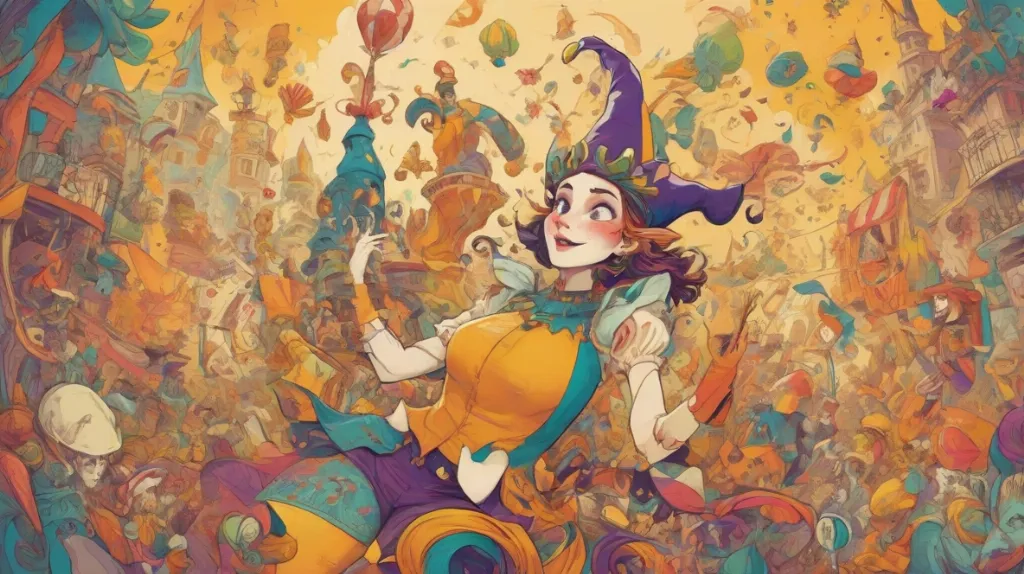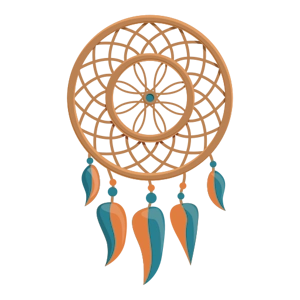What Does It Mean to Dream of Jester’s cap ?
Posted on: November 2, 2024
Last updated: February 19, 2025
The jester’s cap symbolizes the balance between humor and wisdom, encouraging individuals to embrace their playful side while also reflecting on deeper truths. It represents the importance of perspective, suggesting that humor can aid in navigating challenges. Additionally, it may indicate deception in relationships, prompting introspection about authenticity.

What does Jester’s cap mean in a dream?
The jester’s cap, often adorned with bells and vibrant colors, serves as a powerful symbol in the realm of dreams. It embodies the duality of life, where humor and folly coexist with wisdom and insight. In many cultures, the jester is seen as a figure who can speak truth to power, using wit and satire to reveal deeper truths. This playful yet profound character invites dreamers to explore the balance between seriousness and lightheartedness in their waking lives.
In a dream context, encountering a jester’s cap may suggest that the dreamer is being called to embrace their playful side. It can signify a need to lighten up and not take life too seriously. The dream book often associates this symbol with the idea of finding joy in the mundane and recognizing the importance of laughter as a coping mechanism. The jester’s cap encourages individuals to let go of their inhibitions and connect with their inner child.
Moreover, the jester’s cap can represent the importance of perspective. Just as a jester can shift the mood of a gathering with a clever quip, this symbol may indicate that the dreamer needs to change their perspective on a situation. It suggests that humor can be a powerful tool for navigating challenges and that sometimes, the best way to address a problem is with a light heart. This cap, therefore, serves as a reminder to not overlook the lighter aspects of life.
Additionally, the jester’s cap may carry connotations of deception or trickery. In some interpretations, it can symbolize the presence of someone who is not being entirely truthful or who is playing games. Dreamers are encouraged to reflect on their relationships and consider whether they are being genuine or if they are surrounded by those who wear metaphorical masks. Ultimately, the jester’s cap invites introspection and the exploration of both the joyous and the serious aspects of life.
Meaning in dream books
1. The Inner Child
In psychoanalytic terms, the jester’s cap may signify the presence of the inner child. This symbol invites the dreamer to reconnect with their playful side and explore their creativity, suggesting that nurturing this aspect can lead to personal growth and emotional healing.
2. Coping Mechanism
The jester’s cap can also be interpreted as a coping mechanism for dealing with stress or anxiety. It may indicate that the dreamer is using humor or playfulness as a way to navigate difficult emotions or situations, highlighting the importance of finding balance in life.
3. Masking True Feelings
Finally, the presence of a jester’s cap in a dream may suggest that the dreamer is masking their true feelings. This symbol can indicate a tendency to hide behind a facade of humor or playfulness, urging the individual to confront their authentic emotions and express them more openly.
1. The Playfulness of Life
The appearance of a jester’s cap in a dream often symbolizes the need for lightheartedness and the importance of not taking life too seriously. This symbol encourages the dreamer to embrace joy and spontaneity, reminding them that laughter can be a powerful tool for healing and connection.
2. Hidden Truths
A jester’s cap can represent hidden truths or insights that are often overlooked. In the realm of the esoteric, this symbol suggests that the dreamer may need to look beyond the surface of situations and recognize the deeper meanings or lessons that lie beneath.
3. The Duality of Existence
The jester’s cap embodies the duality of existence, representing both joy and sorrow. This symbol serves as a reminder that life is a balance of opposites, and embracing both sides can lead to a more fulfilling and authentic experience.
Jester’s cap in different cultural contexts in dreams
The jester’s cap, often adorned with bells and vibrant colors, symbolizes a rich tapestry of cultural significance across various societies. In Western culture, the jester has traditionally been viewed as a figure of humor and wisdom, often serving as a social commentator who uses wit to challenge authority. This dual role of the jester as both entertainer and truth-teller resonates deeply in the realm of dream interpretation, where the jester’s cap may represent the need to embrace humor in the face of adversity or to question societal norms. As one navigates the complexities of life, the jester’s cap invites individuals to find levity amidst the seriousness of existence.
In Slavic traditions, jesters and fools often appear in folklore, embodying the spirit of mischief and the unpredictability of fate. These characters remind us that life is not always straightforward, and the jester’s cap can symbolize the acceptance of chaos and the importance of adaptability. In this context, wearing the jester’s cap in a dream may indicate a need to embrace one’s playful side, suggesting that laughter and creativity can be powerful tools for navigating life’s challenges.
Eastern cultures, particularly in the context of traditional theater, highlight the role of the jester as a bridge between the mundane and the divine. The jester’s cap thus becomes a metaphor for spiritual enlightenment, where humor serves as a pathway to deeper understanding. In dreams, this element may signify a call to explore one’s spiritual beliefs and to find joy in the journey of self-discovery. The cap’s playful nature encourages individuals to not take life too seriously, reminding them that wisdom can often be found in the light-hearted moments.
In Oriental cultures, the jester is often seen as a wise fool, a character who possesses profound insights hidden beneath a facade of folly. The jester’s cap can symbolize the paradox of wisdom cloaked in jest, suggesting that the dreamer may need to look beyond appearances to uncover deeper truths. This cultural perspective invites individuals to reflect on their own lives, encouraging them to embrace the unexpected and to recognize that sometimes, the answers we seek come wrapped in laughter and playfulness. Ultimately, the jester’s cap serves as a reminder that life is a delicate balance of seriousness and joy, urging us to celebrate both aspects in our dreams and waking lives.
Jester’s cap in other contexts of use
In other contexts of the element ‘Jester’s cap’
The Jester’s cap in dreams can symbolize various themes and emotions. Here are 35 contexts in which this element may appear, each with its own unique interpretation:
Wearing a jester’s cap
This may indicate a desire to embrace playfulness or to express your true self without fear of judgment.
Seeing someone else wearing a jester’s cap
This could represent your perception of that person as carefree or foolish, or it may reflect your own insecurities about being taken seriously.
Jester’s cap in a carnival
This setting suggests a time of celebration and joy, but it may also hint at underlying chaos or confusion in your life.
Jester’s cap falling off
This may symbolize a loss of control or a fear of losing your identity in social situations.
Jester’s cap in a dream theater
This could indicate a need for self-expression or a desire to perform in front of others.
Jester’s cap in a serious meeting
This may suggest that you feel out of place or that humor is being used to mask tension in a serious situation.
Jester’s cap in a playful setting
This context reflects a need to reconnect with your inner child and embrace joy in your life.
Jester’s cap being gifted
This may symbolize an invitation to lighten up or to take a more humorous approach to a situation.
Jester’s cap in a dream of chaos
This could indicate that you are feeling overwhelmed and need to find humor in the madness around you.
Jester’s cap in a royal court
This suggests a dynamic where humor is used as a tool for truth-telling or to defuse tension among powerful figures.
Jester’s cap in a dream of conflict
This may symbolize the need to find a light-hearted approach to resolving disputes or disagreements.
Jester’s cap being worn by a child
This reflects innocence and the importance of play in understanding life’s complexities.
Jester’s cap in a dream of loneliness
This may indicate a longing for companionship and the desire to bring joy into your life.
Jester’s cap in a dream of celebration
This context suggests that you are ready to embrace joy and festivities in your waking life.
Jester’s cap in a dream of sadness
This may symbolize a coping mechanism where humor is used to mask deeper emotional pain.
Jester’s cap in a dream of adventure
This indicates a willingness to take risks and explore new experiences with a light heart.
Jester’s cap in a dream of work
This may suggest that you need to inject some humor into your professional life to alleviate stress.
Jester’s cap in a dream of family
This reflects the dynamics of your family relationships and the role of humor in fostering connections.
Jester’s cap in a dream of travel
This may symbolize the excitement of new experiences and the joy of discovery.
Jester’s cap in a dream of education
This suggests a playful approach to learning and the importance of creativity in your studies.
Jester’s cap in a dream of nature
This context reflects a harmonious relationship with the natural world and the joy it brings.
Jester’s cap in a dream of technology
This may symbolize the need to balance seriousness with playfulness in a tech-driven world.
Jester’s cap in a dream of friendship
This indicates the importance of humor in building and maintaining relationships.
Jester’s cap in a dream of fear
This may suggest that humor is a defense mechanism against anxiety or fear.
Jester’s cap in a dream of love
This reflects the playful and light-hearted aspects of romantic relationships.
Jester’s cap in a dream of conflict resolution
This suggests that humor can be a powerful tool in resolving disputes.
Jester’s cap in a dream of self-discovery
This indicates a journey toward understanding your true self and embracing your quirks.
Jester’s cap in a dream of nostalgia
This may symbolize a longing for simpler times when life was more carefree.
Jester’s cap in a dream of transformation
This reflects the process of change and the ability to adapt with humor and grace.
Jester’s cap in a dream of spirituality
This suggests a light-hearted approach to spiritual matters, emphasizing joy and laughter in your journey.
Jester’s cap in a dream of mystery
This may indicate that there are hidden truths that can be uncovered through humor and playfulness.
Jester’s cap in a dream of community
This reflects the importance of shared laughter and joy in fostering a sense of belonging.
Jester’s cap in a dream of creativity
This suggests that embracing your playful side can enhance your creative pursuits.


Comments posted under the entry: 0
The user must be logged in to comment or view comments.